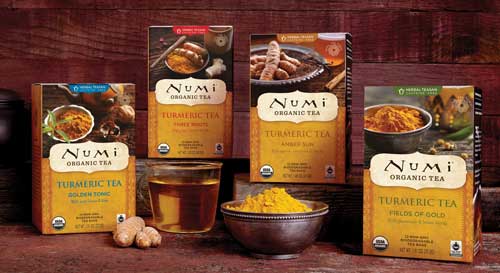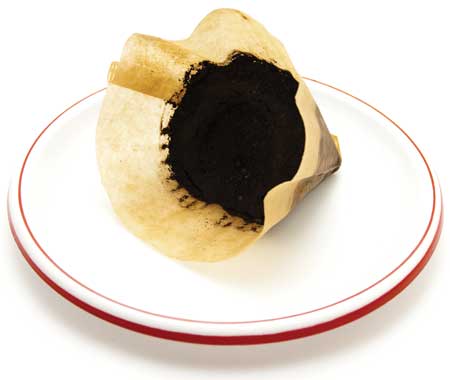Ingredient Development Is Always Evolving
INGREDIENTS
 The food and beverage industry is an interesting and dynamic one. Researchers making new discoveries about the functional and health benefits of ingredients and foods and ingredient manufacturers developing new ingredients or improving those currently used affect what consumers see on store shelves and menus. Shifting product and consumer trends play a role as well. From ingredients that may help increase satiety and replace eggs in formulations to technologies that shed light on chocolate bloom and print 3-D sugar-based forms for pastry decorating—all show how the industry continues to innovate. Even new flavor and product trends demonstrate how consumers’ preferences are evolving. This month’s Ingredients column will explore these developments and more and examine trends that illustrate the ever-changing array of food and beverage products.
The food and beverage industry is an interesting and dynamic one. Researchers making new discoveries about the functional and health benefits of ingredients and foods and ingredient manufacturers developing new ingredients or improving those currently used affect what consumers see on store shelves and menus. Shifting product and consumer trends play a role as well. From ingredients that may help increase satiety and replace eggs in formulations to technologies that shed light on chocolate bloom and print 3-D sugar-based forms for pastry decorating—all show how the industry continues to innovate. Even new flavor and product trends demonstrate how consumers’ preferences are evolving. This month’s Ingredients column will explore these developments and more and examine trends that illustrate the ever-changing array of food and beverage products.
Food Development Enters a New Dimension
One novel technology that is getting attention from the food industry is 3-D printing. At the 2015 National Restaurant Association Show, 3D Systems demonstrated its ChefJet Pro 3D Printer. It may take some time before a 3-D printer is as common as an oven or refrigerator in a kitchen, but the technology already has some interesting applications in pastry and confectionery areas.
The ChefJet Pro builds layers of wet and dry ingredients to form the three-dimensional figure. Sugar and maltodextrin are commonly used to make intricate shapes and figures and delicate lattice-work that would be impossible to form by hand. Finished products like these are used to decorate cakes and other confections, adding a new level of visual interest. The ingredients used to make the figures can be flavored and colored. The company showcased tiered cakes decorated with 3-D printed toppers and borders as well as cupcake toppers and cocktail garnishes printed on the ChefJet Pro.
Late last year, Hershey’s teamed with 3D Systems at Hershey’s Chocolate World Attraction to debut 3-D printed chocolate, giving visitors the chance to see 3-D printing in action and see examples of chocolate produced on a 3-D printer. Since that time, the companies have refined the printer’s technology to release what Hershey’s calls “the most advanced version in the world.” At the National Confectioners Association’s 2015 Sweets & Snacks Expo, the company showed how a 3-D printer can produce intricate designs and shapes not possible with traditional chocolate molding.
 Natural Nine Looks at Trending Food Topics
Natural Nine Looks at Trending Food Topics
Look for more hemp protein powder and turmeric in products on grocery store shelves as food manufacturers capitalize on consumers’ desires for more natural, healthful products, according to the Natural Nine, Sterling-Rice Group’s annual list of natural and organic food trends.
Hemp protein is a fit for bar applications like Evo Hemp Bars, but it is also turning up in nut butters, burgers, and snacks. Turmeric, a spice used in Indian cuisine, is becoming more popular as people learn about its anti-inflammatory effects. Products formulated with it include lassi and side dishes like brown rice. Tea is another application to feature turmeric, and Numi Organic Tea recently debuted a line of four organic turmeric teas made with turmeric blended with real fruits, flowers, and spices like lime, rose, and cinnamon.
Kara Nielsen, culinary director at Sterling-Rice Group, who prepares the Natural Nine list, also points out how milk is being optimized to maximize digestibility and protein content while nuts like coconut and almond are used to make higher-protein and gluten-free flours for use in mixes or bakery products. Nuts are also featured in the dairy-free cheese trend. Here, nut milks replace cow and goat milk to create dairy-free cheese-style products like Miyoko’s Creamery Cultured Nut Product and Treeline Treenut Cheese.
Global flavors across all food segments is one trend that continues to grow in popularity. Nielsen’s research explains that the natural channel is the place for all things global, including bold flavors characteristic of many popular global cuisines. World Peas green pea snack comes in varieties like vinegar, Sichuan, curry, and wasabi. Consumers can also use Nona Lim Vietnamese Pho Broth to prepare that popular dish pho and snack on TaDah! Foods Falafel Poppers.
Sprinkling fruit, vegetable, and vitamin powders such as Super Sprout vegetable and fruit powders and Kickers Powdered Food Enhancers on foods or into beverages offers consumers a convenient way to add flavor to products and gives parents a way to add vegetables to their children’s meals. Another trend addressing the use of specific nutrients in products is one that draws on Chinese medicine and Indian Ayurveda.
Adaptogens—herbs, mushrooms, and roots used in these treatments—are thought to offer benefits like reduced stress, sustained energy, immune support, and mental clarity. Products available to consumers include hot chocolate mixes formulated with mushrooms, elixirs and tonics made with herbs, and a nut mix that features maca.
Rounding out the Natural Nine list is a trend that deals with what is used to package products rather than the products themselves. Here, food companies, especially those in the natural channel, are addressing the concerns of some consumers who are calling for sustainable packaging. The cereal box for Back to the Roots Stoneground Flakes uses 18% less paper and 25% less plastic than traditional bag-in-box. The OneCoffee Organic Single Serve Coffee Pods are 99% compostable. Biodegr(edible) Cups from Loliware are edible. These flavored cups are an alternative to disposable paper and plastic cups.
--- PAGE BREAK ---
Choline’s Potential in Fortified Foods
The popularity of certain nutrients with consumers and product developers rises and falls. Today, probiotics, omega-3 fatty acids, and protein are a few of the top nutrients that food and beverage producers, ingredient manufacturers, and nutritionists are promoting. Research studies, trends, and other factors contribute to this.
Of course, the food industry is always on the lookout for the next up-and-coming nutrient to highlight. One of these is choline, as A. Elizabeth Sloan pointed out in a recent Food Technology article (Sloan 2015). The nutrient, which The Choline Information Council, Escondido, Calif. (cholinecouncil.com), calls “one of today’s more under-publicized and overlooked nutrients,” is associated with benefiting the liver, heart, and brain. The organization points out that choline helps support normal liver function and may help prevent nonalcoholic fatty liver disease and fatty liver, plays a role in preventing clots that cause heart attacks and strokes, supports nerve impulses that ensure a regular heartbeat, and contributes to fetal and infant brain development and healthy cognitive function throughout life. The Institute of Medicine considers choline an essential nutrient.
Choline is found in a variety of foods, with egg yolks being one of the top sources of the nutrient [126 mg/large egg yolk and 250 mg/100 g of liquid whole egg, according to the American Egg Board, Park Ridge, Ill. (aeb.org)]. Whole foods like eggs, shrimp, some meats, and more can provide sufficient amounts of choline (the recommended Adequate Intake is 425 mg/day for women and 550 mg/day for men), but as more consumers become aware of the benefits of choline, The Choline Information Council believes that products such as energy bars, powders, and beverages fortified with choline will increase in popularity. Choline ingredients like Memor-C choline salts from Balchem Corp., New Hampton, N.Y. (balchem.com), are suited to fortification of these and many other products like baked goods, cereals, jams and jellies, snack foods, condiments, sauces, soup and soup mixes, and pasta. The Memor-C line includes choline chloride and choline bitartrate, which are soluble, stable, and bioavailable forms of choline.
Chicory Root Fiber’s Potential Satiety Effects
New research has found that chicory root fiber may help to improve appetite regulation and decrease food intake in overweight and obese children, building upon previous studies on the fiber’s weight management effects in adults and children.
Researchers from Calgary University conducted the study on 42 overweight and obese children aged 7–12 where the diet of the children in the experimental group was supplemented with OraftiSynergy1 chicory root fiber from BENEO, Mannheim, Germany (beneo.com) (Hume et al. 2015). According to the results, the children who ate 8 g of fiber/day reported higher ratings in their feeling of fullness and satisfaction and a lower prospective food consumption at the end of the 16-week study. The researchers also discuss how the children who consumed 8 g of fiber/day had a decrease in waist circumference and reduced fasted insulin levels due to a shift in gut microbiota (Bifidobacteria population significantly increased in these children) (Nicolucci et al. 2015). Overall, the researchers concluded that consuming prebiotic fiber over the long term may reduce energy intake by increasing satiety and fullness, which in turn positively affects body weight, and that prebiotic fiber has the potential to reduce body fat by gut microbiota modulation. BMO Financial Group, Alberta Children’s Hospital Research Institute, and Canadian Institutes of Health Research funded the research.
 Parents Express Concern Over Colorings
Parents Express Concern Over Colorings
Consumers are becoming more aware of the ingredients that food manufacturers use, especially colorings. Parents, in particular, are expressing their concern over the use of synthetic colorings, and actually say that they prefer naturally derived colorings in food they serve their children, according to a consumer study conducted by Kalsec, Kalamazoo, Mich. (kalsec.com). More than 80% of parents in the United Kingdom and the United States with a child aged 3–12 said that they are more likely to buy a food product for their children if it is made with a naturally derived coloring instead of a synthetic one. The number-one concern about synthetic colorings cited by parents is ADHD/behavior issues. Most of the parents surveyed (seven out of every 10) responded that they would pay more for food products that contain naturally derived colorings. Half of U.S. parents are specifically concerned about red colorings in food and beverage products for their children, while one-third of UK parents look for “no synthetic colours” on the ingredient label or front panel.
 Analyzing Antioxidants in Spent Coffee Grounds
Analyzing Antioxidants in Spent Coffee Grounds
Spent coffee grounds are rich in antioxidants that may serve as functional food ingredients. Some of the bioactive compounds are easily extracted with water, but others are bound to other structures by hydrogen, covalent, and iconic bonds and other interactions. Researchers have determined the best ways to extract these compounds to determine the amounts in spent coffee grounds.
Previous research has focused on identifying and quantifying the free phenolic acids. “Knowledge of the total content of phenolic compounds (free and bound) in spent coffee extracts is crucial for their potential use as functional ingredients by the food industry,” write the researchers. So Monente et al. (2015) designed a study where they used three treatments (alkaline hydrolysis, acid hydrolysis, and saline treatment) to release the bound compounds in spent coffee grounds and then measured and analyzed them. Their results showed them the amounts of the different types of phenolic compounds that were bound to other compounds in spent coffee grounds. They learned that a high percentage of the phenolic acids in spent coffee grounds are linked to macromolecules such as melanoidins or other Maillard reaction products, mainly by noncovalent interactions, whereas about 20% of phenolic acids in brewed coffee were attached. Using alkaline hydrolysis and saline treatment gave the researchers the best indication about the total content of both free and bound phenolic compounds in spent coffee grounds.
--- PAGE BREAK ---
 New Insights Into Chocolate Bloom
New Insights Into Chocolate Bloom
Chocolate bloom—the whitish coating on chocolate’s surface that forms when lipids migrate to the surface and then recrystallize—is still edible but not appealing to consumers. The mechanism responsible for the formation of blooming is not fully understood, but researchers at Nestlé and the Institute of Solids Process Engineering and Particle Technology hope to shed some light on this after investigating the microscopic structural changes that occur when chocolate blooms (Reinke et al. 2015).
Using microfocus small-angle N-ray scattering and contact angle measurements, the researchers analyzed the migration pathway of oil into a cocoa butter matrix with different dispersed particles. From this they learned that the lipids responsible for chocolate bloom move through pores and cracks in the chocolate, possibly due to capillary pressure. As they move along, they soften and dissolve solid cocoa butter into a liquid form. The researchers concluded that reducing the number of pores and cracks and reducing the non crystallized liquid cocoa butter content may help to minimize bloom.
Companies Promote Egg Replacement Options
The spread of avian influenza H5N2 is taking a toll on the nation’s poultry industry; as of press time, more than 40 million chickens and turkeys have died from the disease or been euthanized, and wholesale egg prices have jumped. Some foodservice operations and product developers that rely on eggs and egg ingredients in their recipes and products have begun to rethink their offerings and are investigating alternative ingredients to replace eggs and egg ingredients.
Eggs are a highly functional ingredient, providing emulsification, texture-enhancing, and foaming properties, to name a few, in many different applications. But given the avian influenza’s wide-reaching effects on the poultry and egg industries in a relatively short period of time, ingredient manufacturers are now promoting their ingredients for egg replacement to help developers with their reformulation efforts.
The functional capabilities of these ingredients, many of which are based on gums, starches, and fibers, include emulsification, moisture retention, increasing shelf life, and volume and viscosity maintenance. Ingredients in the GumPlete and PenNovo lines from Penford Food Ingredients, Centennial, Colo. (penford.com), can replace whole egg, egg yolk, and egg whites in baked goods, meringues, mousse, pasta, sauces, custard fillings, and dressings. The ingredients are modified food starches or blends of starches and gums. Ingredion, Westchester, Ill. (ingredion.com/us), which closed its acquisition of Penford in early 2015, promotes its modified food starches from the PenNovo, N-Creamer, and Purity Gum lines as well as pulse proteins from the Vitessence line. Vitessence Pulse 3600 is made from faba bean protein and provides emulsification to salad dressings and mayonnaise-based dressings. In these applications, the pulse protein ingredients can replace up to 50% egg yolk at a usage level of 6%.
Other sources like fiber and wheat protein are functional and cost-effective alternatives to eggs. Citrus pulp forms the basis of Citri-Fi 200FG from Fiberstar, River Falls, Wis. (fiberstar.net). The ingredient, which also contains a small amount of guar gum, is said to provide texture and freshness to baked goods like cake when used to replace up to 30% of egg in the formula. It is fairly easy to use; Fiberstar indicates that Citri-Fi 200FG should be pre-mixed with other dry ingredients in the formula and, in certain instances, it can be predispersed into the oil before water is added. Another alternative, Arise wheat protein isolate from MGP Ingredients, Atchison, Kan. (mgpingredients.com), is especially suited for use in flour-based products like bread and other bakery items, pasta, noodles, batters, and breadings, where it partially replaces egg whites. Arise 6000 has a minimum protein content of 85% and can increase dough extensibility, crumb firmness, bread loaf, and water absorption while decreasing the mix time of dough. The second ingredient in the line, Arise 8000, functions in similar ways to Arise 6000, but provides enhanced mixing capabilities and high viscoelastic properties.
Arla Foods Ingredients, Viby J, Denmark (arlafoodsingredients.com), promotes the use of its Nutrilac whey protein as a functional replacement for egg ingredients in bakery applications, producing cakes with a moist texture and more elastic crumb. One of the benefits that Nutrilac whey protein can bring to formulations is that it is seen as a “clean label” ingredient, according to the company. Unlike eggs, the ingredient does not require refrigeration and it has a longer shelf life than eggs—up to 18 months at room temperature.
Finally, AlgaVia Whole Algal Flour from Solazyme, South San Francisco, Calif. (algavia.com), is derived from microalgae; it is relatively high in fat (50%–55%) and also contains fiber, protein, micronutrients like calcium, vitamin C, and phospholipids, and antioxidants lutein and zeaxanthin. The golden-yellow powder is water dispersible. The company has demonstrated the ingredient’s functionality in replacing egg yolks in applications like challah bread and Alfredo sauce where it maintained the dough rheology and improved the softness in the bread and produced a stable and creamy sauce.
 How Cooking, Digestion Affect Wheat Proteins
How Cooking, Digestion Affect Wheat Proteins
New research as to how wheat proteins, including gluten, change when cooked and digested could have implications for people with celiac disease or wheat allergies, according to a study published in Journal of Agricultural and Food Chemistry.
For the study, the researchers cooked store-bought pasta and simulated how the body would digest it using a harmonized in vitro static model of oral–gastro–duodenal digestion (Mamone et al. 2015). They used pasta because it is a widely consumed wheat containing food. The results showed that the proteins from cooked pasta are hydrolyzed during in vitro digestion. Some of the resulting peptides that are released contain amino acid sequences that can trigger immune responses in people with celiac disease. The results are a little better for people with wheat allergies, as some non-gluten allergens (alpha-amylase/trypsin inhibitor in particular) leak into the cooking water as pasta is boiled, meaning that there is a reduced allergenic potency, report the researchers. They also add that alpha-amylase/trypsin inhibitor is a major allergen responsible for a condition called baker’s asthma and it may trigger inflammation and immune reaction in other intestinal and nonintestinal immune disorders such as non-celiac gluten sensitivity.
--- PAGE BREAK ---
 A Way to Reuse Acid Whey Byproduct
A Way to Reuse Acid Whey Byproduct
As the popularity of Greek yogurt increases, so too does the amount of the byproduct acid whey, which can cause environmental problems if not disposed of properly. Food scientists at the University of Wisconsin–Madison’s Wisconsin Center for Dairy Research (CDR) are developing a method to isolate the various components of acid whey and find commercial uses for them.
Acid whey is about 95% water with the remaining amount being made up of protein and other solids like lactose, lactic acid, calcium, phosphorus, and galactose. Using drying processes to separate these is difficult, with some of the components becoming sticky as they are dried, so the scientists at the CDR are turning to membrane filters to separate the components. Karen Smith, dairy processing technologist, explains that she and fellow researchers are using membranes together in the process to separate the components into value-added ingredients. Currently, they are perfecting a method to separate lactose from acid whey, an ingredient that is valuable to food companies in food-grade form, according to the CDR. The long-term goal is to expand the technology to successfully separate all of the components from acid whey.
Next month’s Ingredients section will detail some of the functionalities of and applications for nuts, seeds, and legumes.
 New Products Incorporate Probiotics
New Products Incorporate Probiotics
Probiotics—those beneficial bacteria found in fermented dairy foods like yogurt and kefir—are popping up in a varied range of other foods, from bakery and snack products to beverages and confections. Ganeden Biotech, Mayfield Heights, Ohio (ganedenbiotech.com, ganedenbc30.com), recently highlighted 14 new commercial products formulated with its patented probiotic strain, GanedenBC 30 (Bacillus coagulans GBI-30, 6086). It also announced that it partnered with CapAble AB to create a new telescoping GanedenBC 30 LifeTop Probiotic Straw that can be used in both refrigerated and shelf-stable milk or juice boxes, pouches, and bottles. The company promotes the spore-forming probiotic ingredient as one that is highly stable and that remains viable through most manufacturing processes, three years of shelf life, and the low pH of stomach acid.
Many of the new food and beverage products that contain GanedenBC 30 were featured by exhibitors at the 2015 Natural Products Expo West show. Consumers can soon try such products as Yogi Cranberry Spice Probiotic Balance Tea, Attune Probiotic Chocolate Bar, Mission Digestive Health Tortillas, Sisters+ Probiotic Yogurt Cultured Cheese, and Miracle Noodle Soup, which contain GanedenBC 30 . Other products formulated with the ingredient are Six Star Fit Lean Protein, Suja Organic Sunrise Probiotic Juice, Nature’s Agave GoSweet Pro, Sweet Earth “Get Cultured!” Functional Breakfast Burrito, and Barsotti Mango Orange Pineapple Juice. The final probiotic-enhanced products highlighted by Ganeden are Uncle Matt’s Orange Juice, Little Duck Organics Tiny Gummies, Fast Track Nutrition ProCookies, and Karma Probiotic Wellness Water.
 What’s in Store for Spices and Seasonings
What’s in Store for Spices and Seasonings
Flavor trends are continually emerging, and product developers have to keep up so they can take advantage of the next big thing. “What’s the next sriracha?” is one of the questions that Jeff Binczyk, senior vice president of sales and marketing at Flavorseal, Avon, Ohio (flavorseal.com), hears quite often from customers looking to make sure they stay on top of emerging trends as a way to beat their competitors. Flavorseal is an expert source on spice transfer technology, which involves coating spices on a medium like a plastic film and applying that medium to meat or poultry whereby the spices and seasonings are transferred to them. Binczyk and his colleagues use their expertise in spices and seasonings to identify what he calls megatrends that are driving spice and seasoning development and how they are used in protein applications like meat and poultry and, to some extent, dairy products like cheese. Alcohol-infused animal proteins (think cabernet-infused ham, for example) and bold and spicy flavors combined with other flavor sensations like sweet for a much more complex flavor experience are two trends worth exploring, says Binczyk. Other trends point to the growing interest in ingredients and flavors from cuisines around the world and the use of combinations of spices and seasonings to add layers of flavors to goods geared toward vegan and vegetarian consumers. Finally, the demand for organic foods and natural foods is driving Flavorseal and other ingredient manufacturers to offer these options in their ingredient lines. “Some of our customers want to be on the cutting edge, and we’ll help them set that edge by giving them unique blends that are tied into these six megatrends,” adds Binczyk.
www.ift.org
Members Only: Read more about these ingredients at ift.org. Type the keywords into the search box at the upper right side of the home page.
 Karen Nachay,
Karen Nachay,
Senior Associate Editor
[email protected]
References
Hume, M., A. Nicolucci, and R. Reimer. 2015. “Prebiotic Fiber Consumption Decreases Energy Intake in Overweight and Obese Children.” FASEB J. 29(1) Supplement 597.3.
Mamone, G., C. Nitride, G. Picariello, F. Addeo, P. Ferranti, and A. Mackie. 2015. “Tracking the Fate of Pasta (T. Durum Semolina) Immunogenic Proteins by in Vitro Simulated Digestion.” J. Agric. Food Chem. 63: 2660–2667.
Monente, C., I. A. Ludwig, A. Irigoyen, M-P. De Peña, and C. Cid. 2015. “Assessment of Total (Free and Bound) Phenolic Compounds in Spent Coffee Extracts.” J. Agric. Food Chem. 63: 4327–4334.
Nicolucci, A., M. Hume, and R. Reimer. 2015. “Effect of Prebiotic Fiber-Induced Changes in Gut Microbiota on Adiposity in Obese and Overweight Children.” FASEB J. 29(1) Supplement 276.6.
Reinke, S. K., S. V. Roth, G. Santoro, J. Vieira, S. Heinrich, and S. Palzer. 2015. “Tracking Structural Changes in Lipid-based Multicomponent Food Materials due to Oil Migration by Microfocus Small-Angle X-ray Scattering.” Appl. Mater. Interfaces. 7: 9929–9936.
Sloan, A. E. 2015. “The Top 10 Food Trends.” Food Technol. 69(4): 24–43.
